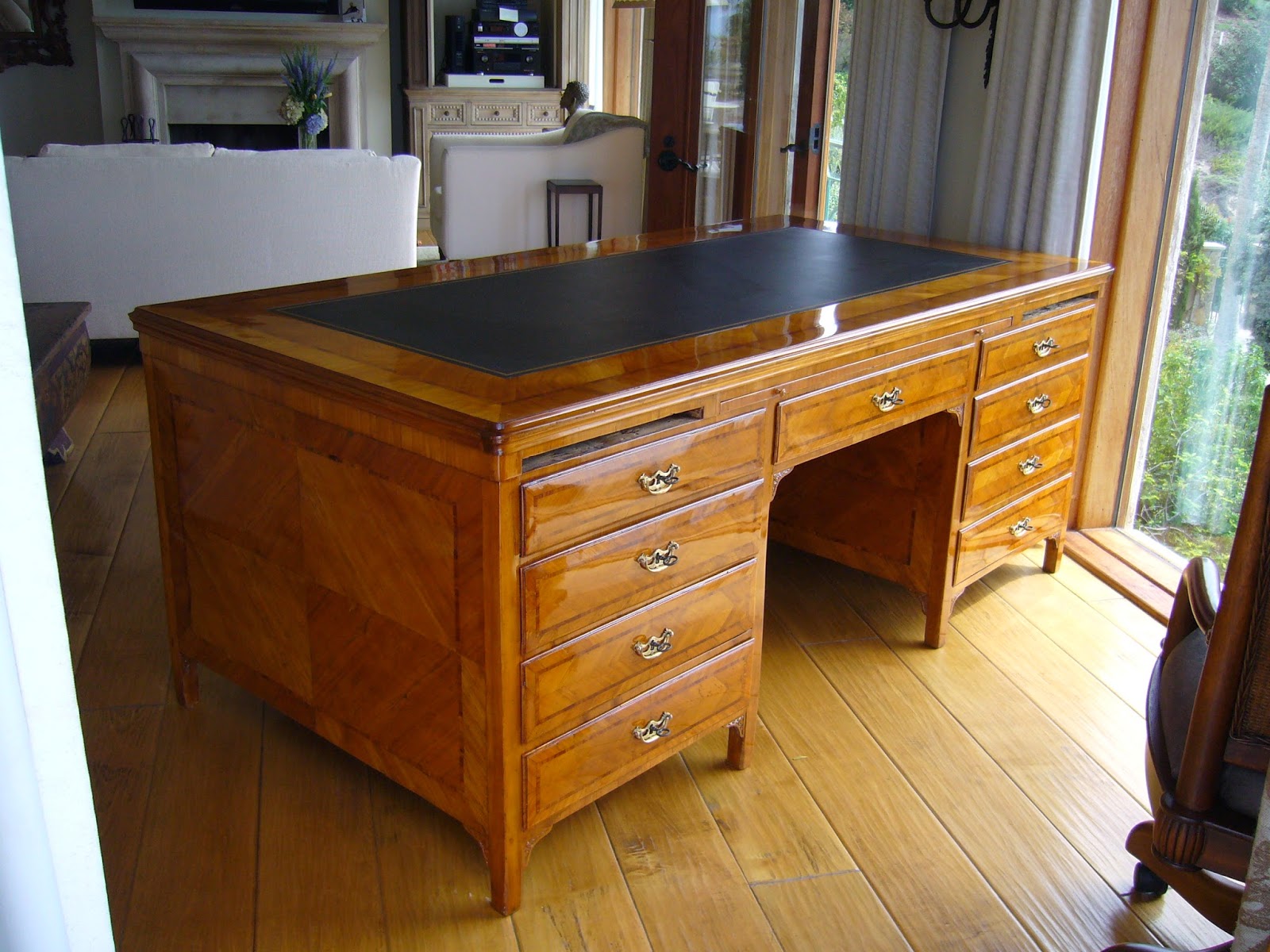For our best pieces, we use sawn veneer. It is usually 10 time as expensive as sliced, but it is a better quality product.
When the veneer is sliced, it is often steamed or heated and the shearing of the knife damage the structure of the wood.
When the veneer is sawn, it is just like solid wood, just thinner.
Patrick Edwards did a good blog entry on sawn veneer with a video of one of the last veneer sawing comapny, near Paris, Georges et Fils.
To read the article it is
here.
And for the video I will put a direct link
So we still have a bit of stock from when we had money, or when we have commission that require sawn veneer, we buy more than we need to provide for our specs.
the veneer is kept in a “cave à placage” a veneer cellar, Patrick likes to call it the veneer cave, it must sooth his primal instincts. The temperature has its importance but mainly we watch the moisture, that we keep around 60%.
The table is in a terrible mess as we dug into the veneer for the boxes and for a clock Patrick is making.
We have veneer but we are low in dyed veneer, especially the greens. So, we have decided to cut some veneer.
We have only a old small delta, but with a resaw king blade and an improvied fence, it does work.
I tried couple spiecies to see how the blade react, and it is not always the haredst wood that are hard to cut. But in the hard wood selection, the maple is really a mean one.
when tuned up, even with an average quality bandsaw, but with patience, you can do wonders (not sure about the spelling of that one).
The veneer is 1/16”, like the one we buy in France.
We can not do yard wide veneers like in Paris but for marquetry packs, and not background this is perfect.
We have been experimenting with a pressure cooker to dye the veneers. It does work pretty well. I put it on twice a day until pressure has build up, and this for three days and it seems to be sufficient.
We use ALJO MFG. CO. and Lockwood’s water stain that Patrick had bought years ago.
When sanded a bit and cut into you can see that the color has penetrated to the heart of the veneer.
We will carry on on the dying wood. The next step, is to dust my German to try to read AND understand that book about staining veneer.
For the green bone it is another story, and not a success yet. We tried to use the same technique and it appears the pigment size are to big to penetrate the cell of the bone. I will try transtint as it is a dye not a stain, and also the chemical approch with copper sulfate that I found in an old book
You can see that the stains grab very well on the outside even if it seems black, but inside….
I will let you know what happens!
Cheers
-- Patrice lejeune































































